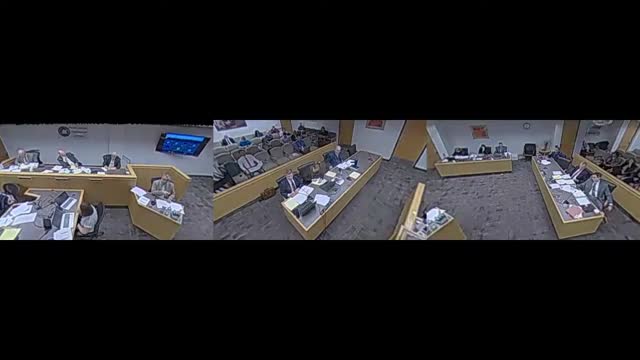Insurance estimates highlight Utah's low wildfire damage costs among six states
March 23, 2025 | Utah Public Service Commission, Utah Subcommittees, Commissions and Task Forces, Utah Legislative Branch, Utah
This article was created by AI summarizing key points discussed. AI makes mistakes, so for full details and context, please refer to the video of the full meeting. Please report any errors so we can fix them. Report an error »

In a recent government meeting held in Utah, discussions centered around the financial implications of wildfires and insurance policies, shedding light on the complexities of risk assessment in the face of natural disasters. As representatives gathered under the bright lights of the conference room, the conversation turned to the pressing issue of wildfire damage estimates and their impact on insurance costs.
One speaker emphasized the need for clarity regarding the financial burden of wildfires, noting that Utah ranks as the lowest among six states in terms of estimated insurance costs related to these disasters. This insight aimed to align the understanding of attendees, as misconceptions had circulated in recent days about the state's vulnerability and the associated costs.
The dialogue also touched on the intricacies of loss history in insurance pricing. It was explained that when an insurance company evaluates a policy, they begin by estimating the expected losses based on various factors, including past incidents. This foundational step is crucial for determining premiums and ensuring that policies are priced accurately to reflect potential risks.
As the meeting progressed, the importance of transparent communication about these issues became evident. Stakeholders recognized that a shared understanding of the financial landscape surrounding wildfires could lead to more informed decisions and better preparedness for future events. The discussions highlighted not only the immediate concerns of insurance pricing but also the broader implications for communities facing the realities of climate change and its associated risks.
In conclusion, the meeting served as a vital platform for addressing the complexities of wildfire damage and insurance, fostering a collaborative environment where stakeholders could work together to navigate these challenges. As Utah continues to confront the realities of natural disasters, the insights shared during this session will likely play a significant role in shaping future policies and community resilience efforts.
One speaker emphasized the need for clarity regarding the financial burden of wildfires, noting that Utah ranks as the lowest among six states in terms of estimated insurance costs related to these disasters. This insight aimed to align the understanding of attendees, as misconceptions had circulated in recent days about the state's vulnerability and the associated costs.
The dialogue also touched on the intricacies of loss history in insurance pricing. It was explained that when an insurance company evaluates a policy, they begin by estimating the expected losses based on various factors, including past incidents. This foundational step is crucial for determining premiums and ensuring that policies are priced accurately to reflect potential risks.
As the meeting progressed, the importance of transparent communication about these issues became evident. Stakeholders recognized that a shared understanding of the financial landscape surrounding wildfires could lead to more informed decisions and better preparedness for future events. The discussions highlighted not only the immediate concerns of insurance pricing but also the broader implications for communities facing the realities of climate change and its associated risks.
In conclusion, the meeting served as a vital platform for addressing the complexities of wildfire damage and insurance, fostering a collaborative environment where stakeholders could work together to navigate these challenges. As Utah continues to confront the realities of natural disasters, the insights shared during this session will likely play a significant role in shaping future policies and community resilience efforts.
View full meeting
This article is based on a recent meeting—watch the full video and explore the complete transcript for deeper insights into the discussion.
View full meeting

